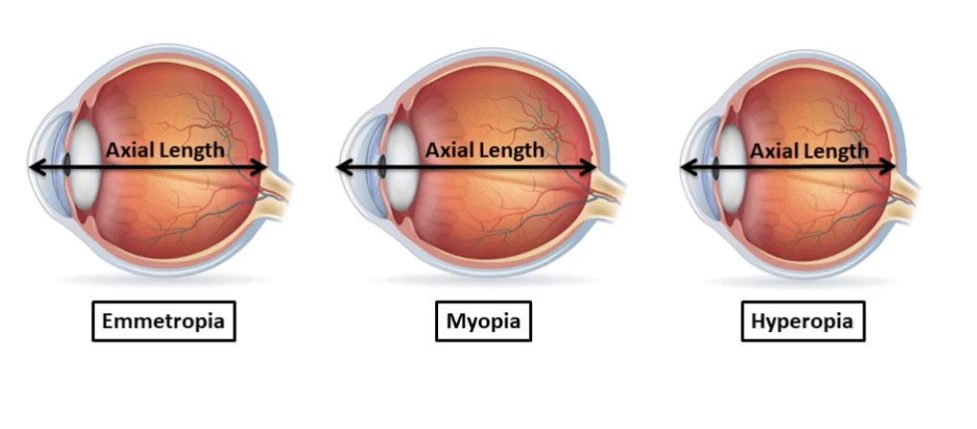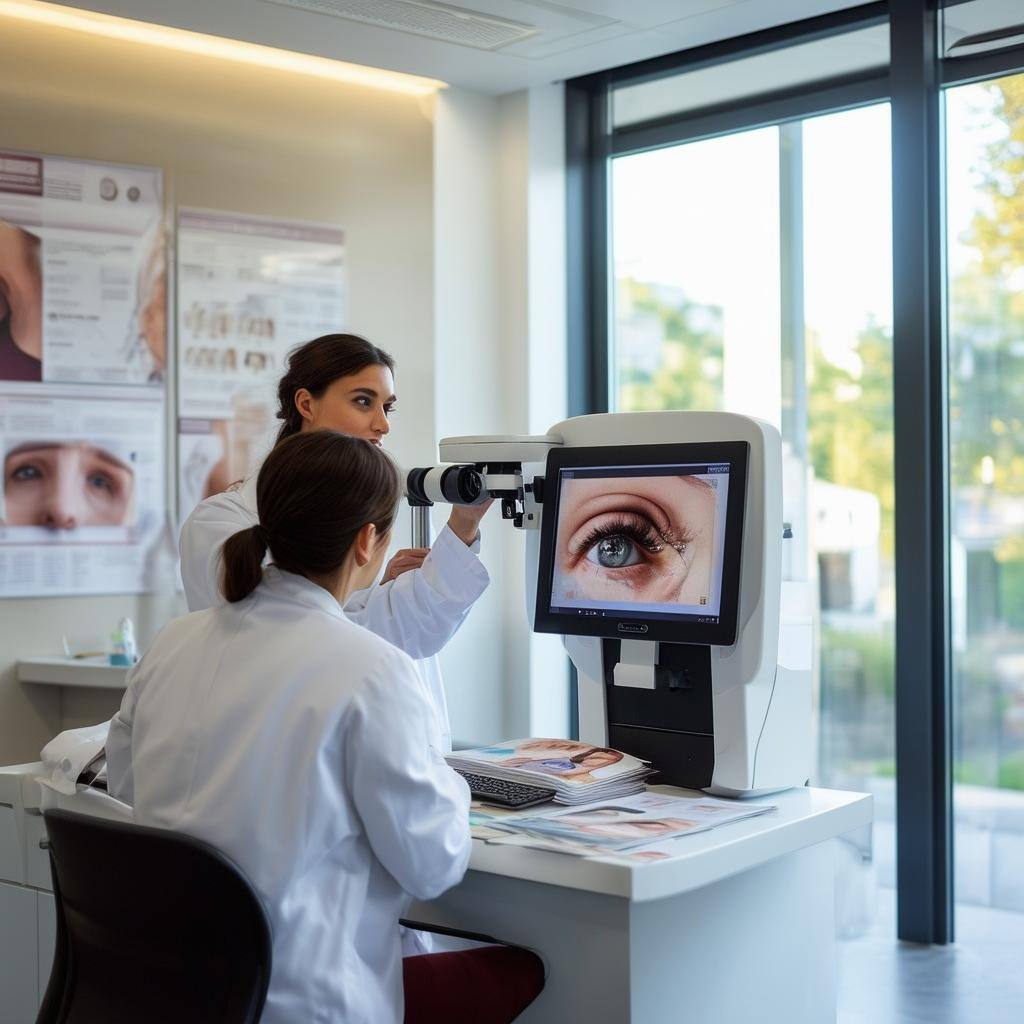Will LASIK help me see up-close?
What is causing the increase in nearsightedness? Nearsightedness (myopia) is increasingly becoming a concern for people of all ages and backgrounds...

Myopia, commonly known as nearsightedness, is a refractive error that causes distant objects to appear blurry. It is a condition that affects approximately one-third of the global population, and its prevalence is expanding: global trends predict nearly 50% of the world’s population will be myopic by 2050.
There are 3 main types of myopia:
Axial Length
One of the main mechanisms of myopia is the elongation of the eyeball. In a normal eye, light is focused onto the retina, the light-sensitive tissue at the back of the eye, by the cornea and the lens. In a myopic eye, the eyeball is too long, causing the light to be focused in front of the retina rather than on it. This results in a blurry image being formed on the retina, leading to nearsightedness. Mean adult values for axial length are 22-25mm (approximately 1 inch).
.webp?width=740&height=325&name=Myopia%20(1).webp)
Figure 1. Axial Length: the distance from the corneal apex to the retinal pigment epithelium (RPE)
In a normal eye, the cornea and the lens are both curved and work together to focus light onto the retina. In a myopic eye, the cornea or the lens may be too steep or have an irregular shape, causing the light to be refracted incorrectly, resulting in a blurry image being formed on the retina.
Over 160 gene loci have been linked to the development of myopia-some are involved in eye growth and development, and others are involved in the signaling pathways that control eye growth. Patients often ask, "If my spouse and I are both nearsighted, will my children be also?" The answer is, likely so, yes: Having one myopic parent increases the risk by threefold and two myopic parents by sixfold. Similarly, in twins, identical twins have greater semblance in refractive error than fraternal twins.
Environmental factors such as prolonged near-work or lack of outdoor activity have also been linked to the development of myopia.
Prolonged near-work, such as reading, gaming or using electronic devices for extended periods of time, has been shown to increase the risk of myopia, due to increased demand for the eyes to focus on near objects.
Myopia is a complex condition that is influenced by a combination of genetic and environmental factors. Elongation of the eyeball, abnormal curvature of the cornea or the lens, and genetic factors all play a role in the development of myopia. Evidence also shows prolonged near-work and lack of outdoor activity also contribute to the development of myopia. Understanding the mechanisms of myopia is paramount for the development of effective prevention and treatment.

What is causing the increase in nearsightedness? Nearsightedness (myopia) is increasingly becoming a concern for people of all ages and backgrounds...

If you are one of the unlucky ones who live with Myopia – more commonly known as near-sightedness – you have probably grown used to the world around...

EVO Implantable Collamer Lens NEW Myopia (nearsighted) Advanced Vision Correction from -3 to -20 diopters.